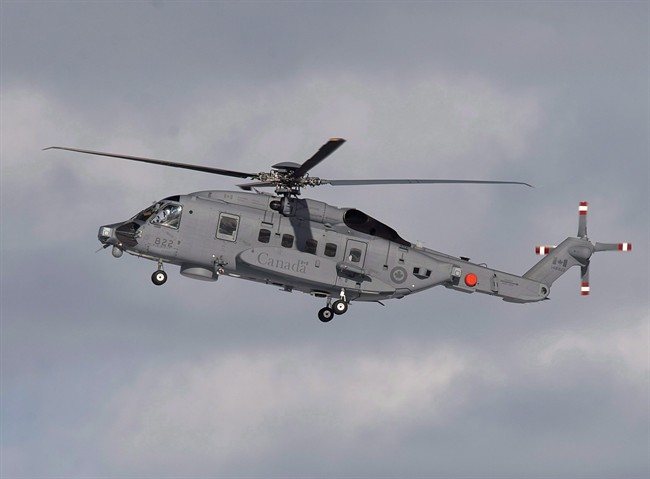OTTAWA – Canada’s air force must speed up crew training and the delivery of CH-148 Cyclone helicopters in the next two years to avoid a shortage as five decade old CH-124 Sea Kings are finally retired, said a senior defence official.

A senior defence official has told The Canadian Press they are looking at ways to do both, starting next year.
Concern that the Sea Kings may be phased out faster than the Cyclones have the equipment to be fully capable of replacing them has been around since the former Conservative government announced last June that the old helicopters would be slowly retired by 2018.
READ MORE: The Ministers: Defence Minister Harjit Sajjan never considered himself a ‘badass’
The Sea Kings fly off the decks of warships and there is fear that some Canadian naval vessels might have to go to sea without helicopters.
The possibility that the Sea Kings would be pulled out of service faster than they can be replaced is something defence planners are scrambling to mitigate, said the senior official with knowledge of the program.
“We’re looking at ways to accelerate the training process to make sure we have enough aircrew available to man the aircraft. And we believe we will,” said the official who was not authorized to speak to the media. “We’re also looking at having an accelerated delivery of some aircraft in the 2016-17 time frame to give us more aircraft on the ramp in (Canadian Forces Base) Shearwater.”
Only four of the 1960s vintage airframes have been retired thus far and the official could not commit to a specific timetable on when the rest would go. The official did say, however, that the decommissioning program was not on hold.
The 28 Cyclones have faced repeated development delays since being ordered in 2004 and are not expected to be fully operational on both the East and West Coasts until 2021.
There are six aircraft at Shearwater, with another two on the way before the end of the year.

Get breaking National news
Documents, obtained by The Canadian Press under access to information laws, show that in addition to ensuring an overlap between the fleets the road to retiring the Sea Kings will be bumpy.
Many of the setbacks relate to the development of the sophisticated software for the Cyclones that runs everything from flight controls to weapons systems and the documents show defence officials believe not all of the bugs will be worked out by the time the aircraft is declared fully operational.
The software is being introduced in two blocks. The first phase allows the helicopter to fly in a limited capacity including search and rescue, and the second tranche will bring the aircraft up to the full warfighting, submarine-hunting version.
“While Block 2 represents a fully functional, operationally relevant Maritime Helicopter, there is insufficient time within a realistic schedule to inject all remaining Maritime Helicopter Requirement specification elements,” said a Nov. 28, 2013 planning document. “Accordingly, it is anticipated that certain capabilities will need to be added during the in-service support (regular maintenance phase), which nominally begins post-Block 2 delivery.”
The significance was downplayed by the official who insisted that by the end of the second phase the air force will have the helicopter it ordered in 2004.
READ MORE: Only four Sea Kings to retire in near future despite retirement party
One of the significant changes the Harper government allowed was to deem the Cyclone a developmental program, much like the oft-maligned F-35 stealth fighter. That means, as opposed to expecting a fully completed helicopter, the government was willing to accept the risk and delays associated with the trial and error of development.
The official said National Defence believes it has been able to mitigate the risk and the program is on track.
But defence analyst Dave Perry, of the Global Affairs Institute, says the problem of training highlights that project delays are not just an accounting nuisance and they have real consequences.
“On this project, that schedule has been continually slipping further into the future since 2008, which must be presenting a complete nightmare for the RCAF that needs to figure out when it can actually stop training people to operate the Sea Kings and start learning how to use the Cyclone,” he said.







Comments